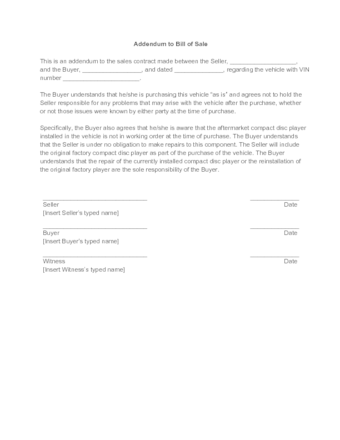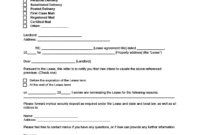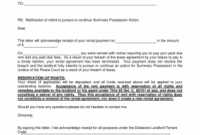Selling your car can be an exciting step, whether you’re upgrading to a newer model or simply need to free up some space in your driveway. While most of the focus often goes into detailing the car, taking great photos, and negotiating with potential buyers, there’s a crucial, often overlooked, step that can save you a lot of headaches down the road: a clear and concise letter documenting the sale. It’s not just a formality; it’s a vital piece of communication that protects both you and the buyer.
Think of this letter as your official handshake, putting all the terms of your agreement down on paper. It helps prevent misunderstandings about the vehicle’s condition, the agreed-upon price, and the exact moment ownership changed hands. Having a properly structured document in place provides a solid record for legal purposes, registration, and even insurance, making the entire transaction smooth and stress-free for everyone involved.
Understanding the Importance of a Solid Car Sale Letter
When you decide to part ways with your vehicle, a simple verbal agreement might feel sufficient at the time, especially if you’re selling to a friend or acquaintance. However, even the best intentions can lead to complications later on. A comprehensive car sale letter acts as a legal safeguard, outlining the specifics of the transaction and proving that the vehicle was indeed sold and when. This can be incredibly important if, for example, the new owner incurs parking tickets or gets into an accident before they’ve had a chance to register the car in their name.
Beyond preventing potential legal headaches, a well-drafted letter establishes a professional and transparent exchange. It shows you’re serious about the sale and that you value clarity, which can build trust with your buyer. This foundation of trust can make the negotiation and handover process much more pleasant. It’s about providing peace of mind for both parties, ensuring that all expectations are clearly set and documented before the keys change hands.
Essential Details to Include
To ensure your selling a car letter template is truly effective, it must contain specific information that leaves no room for ambiguity. This clarity is paramount for a smooth transaction.

- Seller Information: Your full name, address, and contact details.
- Buyer Information: The buyer’s full name, address, and contact details.
- Vehicle Details: Comprehensive information about the car, including its make, model, year, Vehicle Identification Number VIN, odometer reading at the time of sale, and license plate number.
- Sale Terms: The agreed-upon selling price in both numbers and words, and the date and time of the transaction.
- Condition Acknowledgment: A statement indicating that the vehicle is being sold "as-is," without any warranties, express or implied.
Including these precise details minimizes the risk of disputes and provides a clear record for all administrative tasks that follow the sale. It’s the cornerstone of a legally sound and hassle-free transaction, reflecting a commitment to honesty and professionalism.
This "as-is" clause is particularly vital in private sales, as it generally absolves you, the seller, from responsibility for any mechanical issues that may arise after the sale. Without it, you could potentially face claims from the buyer if they discover problems shortly after purchase. While you should always disclose known defects honestly, this clause formalizes the understanding that the buyer is accepting the vehicle in its current state.
Crafting Your Perfect Selling A Car Letter Template
Creating your own car sale letter doesn’t have to be daunting. In fact, by using a reliable selling a car letter template, you can ensure all the necessary bases are covered without missing critical information. Start by gathering all the pertinent details about both yourself and the buyer, as well as every specification related to the vehicle. Having this information at hand will streamline the process and prevent any last-minute scrambling.
Once you have all the data, begin populating your template. Remember to be meticulous with the VIN and odometer reading, as these are crucial for registration and legal purposes. Double-check all names and addresses for accuracy. The goal is to create a document that is not only comprehensive but also easy to read and understand, so avoid overly complex jargon. A straightforward approach is always best when it comes to legal documentation.
It’s also wise to include a specific clause about the transfer of liability. This statement confirms that from the moment the transaction is completed, all responsibilities related to the vehicle, including its operation, insurance, and any future incidents, transfer entirely to the buyer. This detail is crucial for your protection, especially when notifying your insurance company and the local Department of Motor Vehicles about the change in ownership.
Finally, review your completed letter carefully. It’s a good practice to have another set of eyes look it over for any typos or omissions. Both you and the buyer should sign and date the document, and it’s highly recommended to have two original copies – one for each party. This simple act of creating a thorough, signed record can save you countless potential headaches down the line, ensuring a clean break from your old vehicle and a smooth transition for its new owner.
- Review all details meticulously before signing.
- Consider having a neutral third-party witness the signing.
- Keep a copy of the signed letter for your records, along with a copy of the bill of sale if it’s a separate document.
- Understand local regulations regarding paperwork for vehicle sales.
Having a clear, signed agreement protects both parties, providing a legal record of the transaction. It solidifies the terms, prevents misunderstandings, and ensures that everyone involved can move forward with confidence. This simple step turns a casual exchange into a documented, professional transfer of ownership.
Ensuring you have all your paperwork in order, especially a robust sales letter, allows you to close the chapter on your old car with complete peace of mind. It’s a proactive measure that safeguards your interests and provides clarity for the buyer, making the entire selling experience as straightforward and agreeable as possible.



